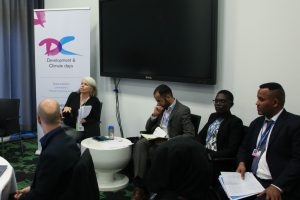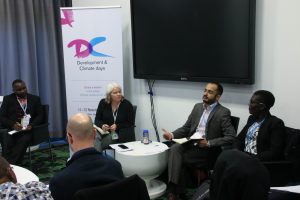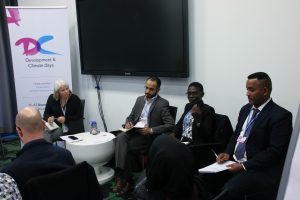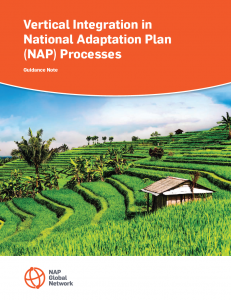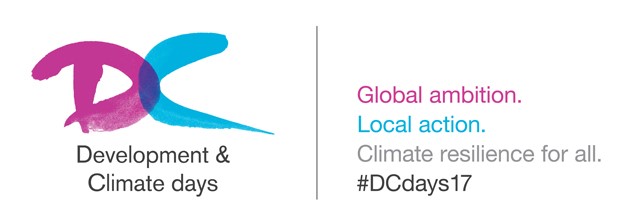 For the last 15 years, Development and Climate Days has brought together delegates during the middle weekend on the sidelines of the Conference of Parties (COP), the UN’s climate change conference, to discuss key issues related to climate change and sustainable development.
For the last 15 years, Development and Climate Days has brought together delegates during the middle weekend on the sidelines of the Conference of Parties (COP), the UN’s climate change conference, to discuss key issues related to climate change and sustainable development.
This year, the NAP Global Network was a contributing partner to the event, and we co-organized a session with the Red Cross Red Crescent Climate Centre which focused on how local-to-national links can make national adaptation plan (NAP) processes more inclusive.
Though nationally driven, NAP processes are intended to be participatory and gender-sensitive while considering vulnerable groups, communities and ecosystems, in line with key principles identified under the United Nations Framework Convention on Climate Change (UNFCCC).
The Network secretariat’s Angie Dazé introduced the session by emphasizing how vertical integration—the creation of strategic and intentional links between national and sub-national adaptation processes—is critical to putting these principles into practice.
Aditya Bahadur from Action on Climate Today noted that strong policies have often lacked ownership by sub-national governments and stakeholders, and that consultation can make policies more rigorous and encourage this type of broader buy-in. Bahadur also noted that while vertical integration and extensive consultation are important, there are challenges: it is resource-intensive, it can unearth conflicts and competing priorities, and it means that the NAP process will take longer.
Maggie Ngwira from Malawi’s Civil Society Network on Climate Change (CISONECC) explained how her organization seeks to empower women as agents of change by advocating for greater involvement in decision making. She also stressed the need for capacity building on adaptation for civil society—not just government officials—to achieve more inclusive NAP processes, and mentioned as an example the training on monitoring and evaluation (M&E) of adaptation that CISONECC hosted. She also noted that “we should not keep our beautiful documents in our offices”—for transparency and improved accountability in adaptation action.
Asrat Yirgu Senato from Ethiopia’s Ministry of Environment, Forest and Climate Change (MEFCC) spoke on Ethiopia’s recent experience finalizing the country’s NAP document as part of their overarching Climate-Resilient Green Economy Strategy. Notably, the NAP document was informed by regional adaptation strategies, and the federal government is now undertaking regional consultations in order to prioritize adaptation actions in each region, demonstrating the iterative approach needed for effective NAP processes. Senato noted that understanding and systematically capturing gender differences in the NAP process is essential.
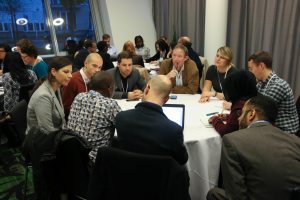
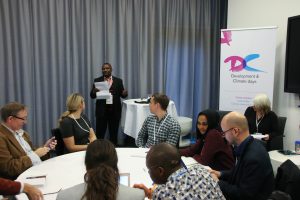
Participants delved into these issues in a participatory session, and Dazé provided closing remarks, noting that linking national and sub-national adaptation processes is critically important but also challenging, requiring finance and capacity strengthening. NAP processes should work within existing governance systems and structures for vertical integration, recognizing that these systems may need to be strengthened for this to be effective. Adaptation decision-making processes should value diverse voices, recognizing the need to empower vulnerable women and men as stakeholders and agents of change in efforts to build climate resilience. Civil society has a key role to play in bridging the gap between people and policy-makers.
Read more about Development and Climate Days 2017.
Read our publication Vertical Integration in NAP Processes: A guidance note for linking national and sub-national adaptation.
